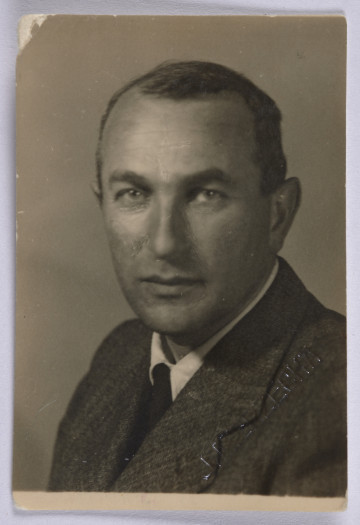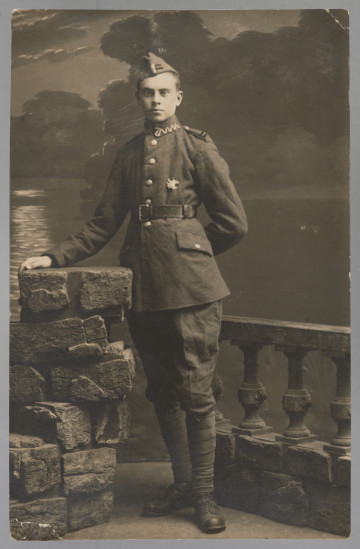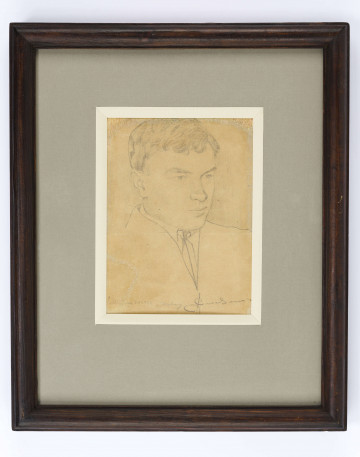
Juliusz Leibel's photograph for documents
1930 — 1939
Museum of the history of Polish Jews
Part of the collection: Stanisław Ignacy Witkiewicz
In 1925, Witkacy devoted himself to the art of portraiture, realised within the framework of the one-man "S.I. Witkiewicz Portrait Company", which was to become a source of quick profit and remedy his financial problems. The rules for the creation of portraits in pastel, charcoal, crayon and pencil techniques were defined by detailed regulations. It was supposed to "save the company from saying the same things over and over again" and was a set of rules to be followed by the clients. The artist obliged them to be on time for the screenings, "because waiting is bad for the mood of the company". Any criticism was not allowed. "The client may not like the portrait, but the company must not allow even the merest remark, without its special authority. If the firm allowed itself this luxury [...], it would have to have gone mad long ago". The nature of the five basic portrait types and their combinations were defined by the letters A, B, C, D and E. The images were often created under the influence of experiments with psychoactive substances - drugs, narcotics or alcohol, and the artist documented his state with sign abbreviations. Witkacy created various modifications of the types described in the rules, often resigning from presenting the torso in favour of autonomising the head, which he placed on various pedestals called bases. These included female portraits with the head raised, known as Alcoforado (in honour of the 17th-century Portuguese nun Marianne d'Alcoforado, author of love letters to a French officer). The figures were also hybridised, usually combining an exaggerated human head with an animal torso element. The portrait of an unknown man with his head set on a cup-shaped base was created without the use of alcohol (NII) and cigarettes (NP3), as a base type in the B+D style, meaning "intensification of character bordering on a certain caricature. The head is larger than life-size". Next to the model on the table top there were a bottle of alcohol, a glass, fruit and a snack card.
Anna Hałata
Author / creator
Dimensions
cały obiekt: height: 50 cm, width: 69,8 cm
Object type
drawing
Technique
pastel
Creation time / dating
Creation / finding place
Owner
The National Museum in Lublin
Identification number
Location / status

1930 — 1939
Museum of the history of Polish Jews

1920
Museum of the history of Polish Jews

1923
National Museum in Lublin
DISCOVER this TOPIC
Museum of King Jan III's Palace at Wilanów
DISCOVER this PATH
Educational path